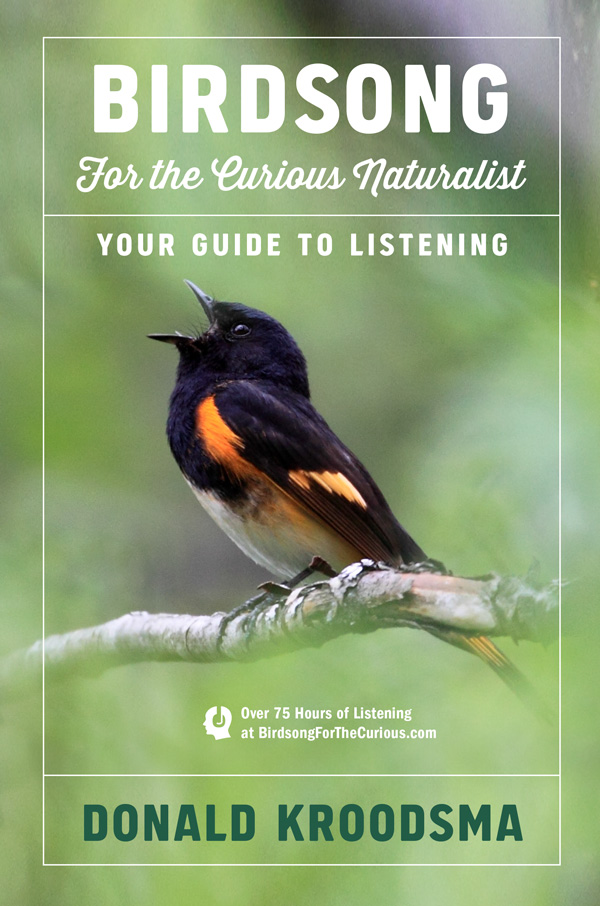20. Seeing the two voices of birds in sonagrams.
3. Why and How Birds Sing
Not one, but two voice boxes
From page 41 in the book.
Seeing the two voices of birds in sonagrams. Like so many other explorations, this one also requires a computer program to graph the songs, such as Raven Lite (see book page 3).
In sonagrams, one can see that most birds utter different sounds in rapid succession, not simultaneously. One cannot know if these sounds are all produced by the same voice box or if the bird rapidly alternates between the two sound sources. Only if two very different sounds occur simultaneously, with one sound above the other in the sonagram, can one know for sure that both voice boxes are engaged.
Consider, for example, the American robin. Download the recording of a singing robin (♫14) and see how he sings a string of his low carols and then punctuates it with a high, screechy eek. Is he using one voice box throughout, or two? Can't tell. Clues come from another recording, in which a mid-winter robin seems to be practicing, singing his low carols and high screechy eeks simultaneously (♫129). You have to see it to believe it, and then slowing the songs to quarter speed helps some more; some of my favorite examples showing twos imultaneous voices are at 0:39, 0:49, and 0:57). As with other songbirds, the low voices (carols) are no doubt from the left syrinx, the high voices (eeks) from the right. His practice reveals a true, two-voice virtuoso, like a wood thrush, but during normal singing he chooses, for whatever reason, to sing the carols and eeks in succession (as in ♫14), rather than simultaneously. How sad, I think, as I like the practicing robin better!
♫129: The robin practicing on a winter morning (Christmas, in fact) reveals how the low carols are sung with one voice box (almost certainly the left) and the higher hissellys with the other voicebox (almost certainly the right). December 25, 2005. Amherst,Massachusetts. (1:29)
